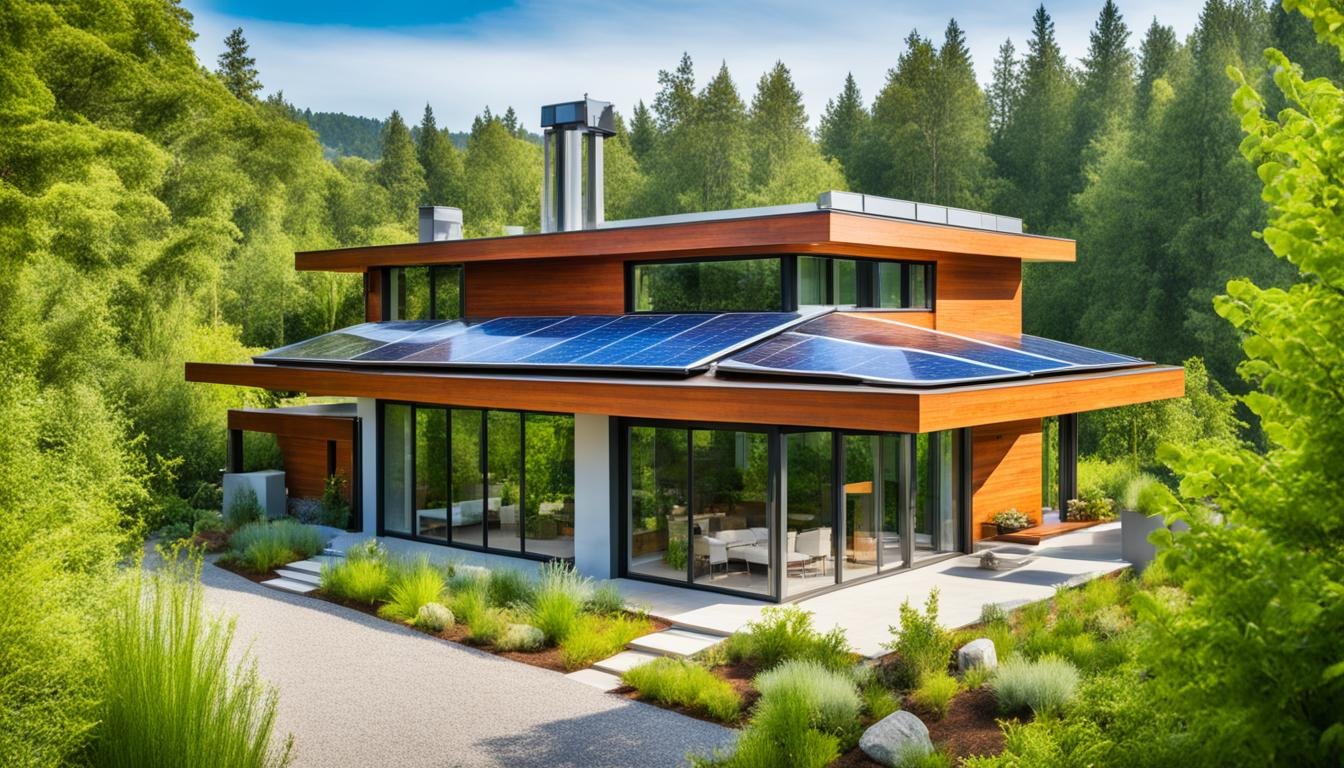Welcome to a world where sustainable home construction goes beyond the traditional bricks and mortar approach. In the face of the ongoing housing crisis and the urgent need to reduce carbon emissions, building environmentally friendly homes has become a critical solution. This article explores the importance of green housing, government incentives for green building, collaboration and innovation in housing finance, sustainable construction materials, the rise of smart homes, creating sustainable communities, the environmental benefits of green homes, the future of sustainable construction, and the role of Exeter City in sustainable housing.
Key Takeaways:
- Building environmentally friendly homes is crucial to address the housing crisis and reduce carbon emissions.
- Green housing provides health and cost advantages, with reduced energy consumption and improved indoor air quality.
- Government incentives and collaboration between public and private sectors are driving the growth of green building.
- Innovative financing models and alternative credit scoring help overcome barriers in sustainable housing finance.
- Sustainable construction materials, such as bamboo and reclaimed wood, offer eco-friendly alternatives.
The Importance of Green Housing
Green housing is not only beneficial for the environment but also offers numerous advantages to homeowners. By utilizing sustainable building materials, implementing energy-efficient designs, and incorporating green building practices, individuals can create eco-conscious homes that promote a healthier environment and provide cost savings.
One key aspect of green housing is the use of sustainable building materials. These materials are responsibly sourced and have a minimal impact on the environment. Examples of sustainable building materials include bamboo, recycled steel, and reclaimed wood. These alternatives offer strength, durability, and aesthetic appeal while reducing the demand for traditional, resource-intensive materials.
In addition to using sustainable materials, energy-efficient designs play a crucial role in green housing. Features such as proper insulation, high-efficiency windows, and smart thermostats help reduce energy consumption and create a comfortable living space. Implementing sustainable home features like solar panels and rainwater harvesting systems further contribute to the overall energy efficiency of a home.
Moreover, green building practices aim to minimize the environmental impact of home construction and operation. By adopting practices such as proper waste management, efficient water usage, and responsible landscaping, homeowners can enhance the sustainability of their homes and reduce their ecological footprint.
Here are some key features and benefits of green housing:
- Reduced energy consumption: Energy-efficient designs coupled with sustainable home features can significantly lower energy usage, resulting in lower utility bills for homeowners.
- Improved indoor air quality: Green building materials and proper ventilation systems contribute to healthier indoor environments, reducing the risk of respiratory problems and allergies.
- Cost savings: Lower energy consumption and reduced maintenance requirements translate into long-term cost savings for homeowners.
- Environmental preservation: By using sustainable materials and implementing green practices, green housing helps preserve natural resources and reduce greenhouse gas emissions.
In conclusion, green housing offers multiple benefits, including energy efficiency, improved indoor air quality, and cost savings. By embracing sustainable building materials, energy-efficient designs, and green building practices, homeowners can contribute to a more eco-conscious and sustainable future.
Government Incentives for Green Building
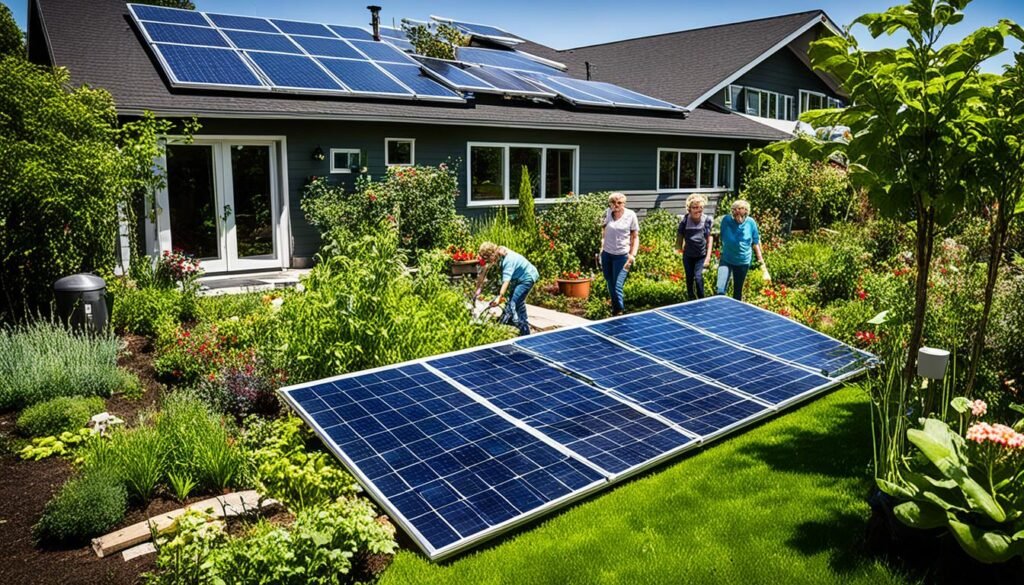
Governments worldwide are taking significant steps to promote the construction of environmentally friendly homes and increase the availability of affordable housing. By offering various incentives, such as tax breaks and financing options, governments aim to attract private sector participation and accelerate the adoption of sustainable building practices.
One notable example is Colombia, which provides tax incentives for green construction projects. These incentives not only stimulate eco-friendly development but also encourage builders and homeowners to prioritize energy-efficient designs and sustainable materials. As a result, the construction industry in Colombia has seen a rise in green housing projects that contribute to a more sustainable future.
Another country implementing government incentives is India. The Indian government offers financing options specifically tailored to low-income populations, making it easier for them to invest in environmentally friendly homes. This approach promotes inclusivity and ensures that sustainable housing is accessible to all segments of society, regardless of their financial capabilities.
By incorporating both tax incentives and financing programs, governments are playing a crucial role in making green housing a viable and affordable option for individuals and communities.
Sustainable Housing Case Study: Green Financing in Colombia
In Colombia, the government’s commitment to promoting sustainable housing is evident through green financing initiatives. One such program is the Sustainable Productive Housing initiative, which provides funding for the construction of environmentally friendly homes.
| Benefits of Green Financing in Colombia | Impact on Sustainable Housing |
|---|---|
|
|
With the support of green financing, developers and homeowners in Colombia can overcome financial barriers and embrace sustainable construction practices. This not only benefits the environment but also enhances the overall quality of housing in the country.
By incentivizing green building through tax breaks and financing options, governments worldwide are driving the growth of affordable and environmentally friendly housing. These initiatives encourage the private sector to invest in sustainable development and make sustainable living accessible to a wider population.
Collaboration and Innovation in Housing Finance

Collaboration between public and private sectors plays a crucial role in making sustainable housing accessible to everyone. By working together, we can overcome the financing barriers that often hinder low-income populations and women in developing countries from achieving their dream of owning a home. In this section, we will explore inclusive financing, alternative credit scoring, and rent-to-own schemes as innovative solutions to address these challenges.
Inclusive financing is a financial approach that aims to provide affordable housing options and facilitate homeownership for marginalized communities. It involves creating partnerships and leveraging resources to ensure that individuals with limited access to traditional financing can obtain the necessary funds. Inclusive financing initiatives often involve government programs, development agencies, and nonprofit organizations collaborating with financial institutions to offer low-interest loans, down payment assistance, and flexible repayment terms. These initiatives empower individuals and families to overcome financial barriers and achieve their homeownership goals.
Alternative credit scoring is another innovative solution that can help individuals with limited credit history or no formal banking records to access housing finance. Traditional credit scoring models often rely on factors such as income stability and credit history, which can exclude those who have not had access to formal financial services. Alternative credit scoring considers other indicators of creditworthiness, such as rental payment history, utility bill payments, and employment records. By incorporating these alternative factors, lenders can assess the creditworthiness of individuals and offer them suitable financing options, making homeownership more inclusive.
Rent-to-own schemes provide an alternative pathway to homeownership for individuals who may not be able to qualify for traditional mortgages. In a rent-to-own arrangement, tenants have the opportunity to rent a property with a portion of their rental payments going toward building equity in the home. This allows individuals to save for a down payment and improve their creditworthiness over time. Rent-to-own schemes offer a more flexible and accessible approach to homeownership, especially for those facing financial constraints.
The use of technology is essential in promoting collaboration and innovation in housing finance. Blockchain technology, for example, can streamline and secure transactions, making the financing process more efficient and transparent. Mobile money platforms provide convenient and accessible ways for individuals to make and receive payments, expanding financial inclusion. Harnessing technology’s power can help bridge the gap between traditional financial systems and underserved communities, making sustainable housing finance more accessible to all.
Through collaboration and innovation, we can break down the barriers that prevent many people from accessing housing finance. By embracing inclusive financing, alternative credit scoring, and rent-to-own schemes, we can create a more equitable and sustainable housing market. With the support of technology, we can enhance the efficiency of lending processes and extend access to credit to those who need it the most. Together, we can empower individuals and communities to secure their own sustainable and affordable homes.
Sustainable Construction Materials
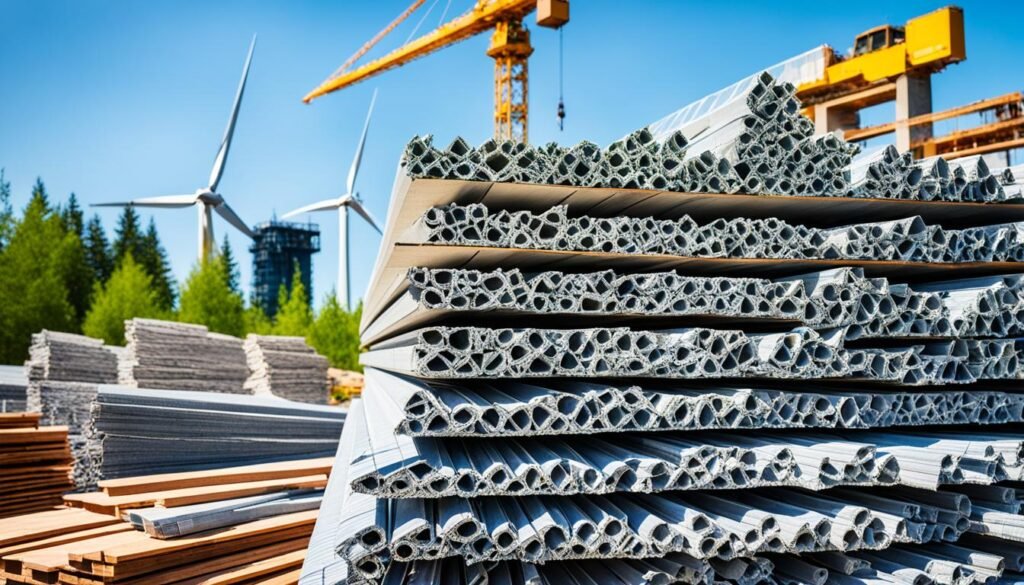
The construction industry is embracing innovative and sustainable materials that not only contribute to the overall aesthetics of a project but also have a reduced environmental impact. By utilizing these materials, such as bamboo, recycled steel, and reclaimed wood, builders can play a significant role in creating environmentally friendly homes.
The Benefits of Bamboo
Bamboo is a rapidly renewable resource that offers remarkable strength and versatility. It is considered one of the most sustainable materials due to its fast growth rate and minimal environmental impact. Bamboo can be used for structural purposes, as well as for flooring, cabinetry, and decorative elements in home construction.
Recycled Steel: An Eco-Friendly Choice
Recycled steel is another innovative material gaining popularity in sustainable construction. By using recycled steel, builders can reduce the demand for virgin materials, conserve energy, and minimize waste. This eco-friendly material is strong, durable, and highly versatile, making it an excellent choice for structural elements in green home construction.
Reclaimed Wood for a Touch of History
Reclaimed wood adds character, uniqueness, and a touch of history to a sustainable home. By reusing wood salvaged from old buildings, barns, or even railway ties, builders not only reduce deforestation but also give new life to materials that would otherwise go to waste. Reclaimed wood can be used for flooring, beams, furniture, and other architectural features, creating a warm and inviting atmosphere in a green home.
The Benefits of Sustainable Materials
“Incorporating sustainable materials into home construction significantly reduces the environmental impact of the building industry. These materials often require fewer natural resources, generate less waste, and contribute to healthier living environments for homeowners.”
By prioritizing the use of innovative and sustainable materials like bamboo, recycled steel, and reclaimed wood, builders can contribute to the development of eco-friendly homes that promote a sustainable future. These materials not only reduce carbon emissions and waste but also provide strength, versatility, and unique aesthetics to create homes that are both environmentally conscious and visually appealing.
| Material | Benefits |
|---|---|
| Bamboo | Rapidly renewable, versatile, minimal environmental impact |
| Recycled Steel | Reduces demand for virgin materials, conserves energy, minimizes waste |
| Reclaimed Wood | Character, uniqueness, reduces deforestation, gives new life to materials |
The Rise of Smart Homes
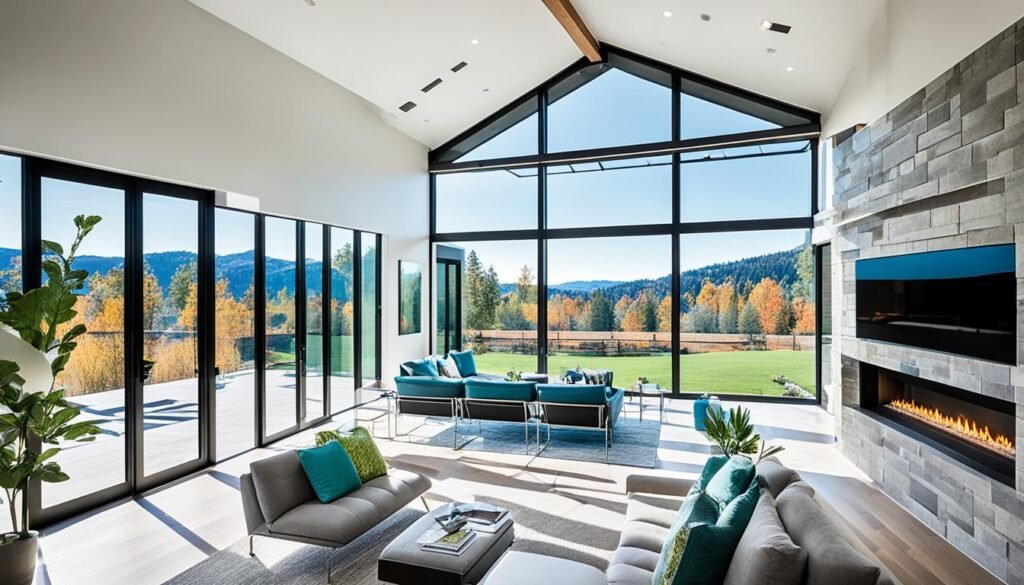
Smart homes are revolutionizing the way we live, offering energy-efficient solutions and seamless automation for a more comfortable and sustainable living environment. By integrating cutting-edge technology, smart buildings are empowering homeowners to take control of their energy consumption, enhance security, and customize their living spaces according to their preferences.
Energy-Efficient Lighting
One of the key features of smart homes is energy-efficient lighting systems. These systems utilize LED bulbs and smart lighting controls to optimize energy consumption. Homeowners can adjust the brightness, color, and timing of their lights through mobile apps or voice commands, reducing electricity usage and saving on utility bills.
Temperature Control
Smart thermostats are another breakthrough in home automation, enabling homeowners to regulate temperature settings remotely and automatically. These devices learn users’ preferences and adjust the heating and cooling systems accordingly, resulting in significant energy savings. By optimizing temperature control, smart homes contribute to a greener future and increased energy efficiency.
Home Automation
Home automation systems are integral to smart homes, allowing users to control various devices and systems within their homes effortlessly. With just a few taps on a smartphone or a voice command, homeowners can manage their security systems, appliances, and even window coverings. This seamless integration optimizes energy usage, enhances convenience, and promotes a sustainable lifestyle.
“Smart homes integrate cutting-edge technology for energy efficiency and convenience, allowing homeowners to reduce energy consumption and customize their living spaces according to their preferences.”
The Benefits of Smart Homes
Smart homes offer a multitude of benefits beyond energy savings. They provide enhanced security through features like smart locks and surveillance systems, enabling homeowners to monitor their homes remotely. Additionally, smart homes offer increased convenience and comfort, as residents can automate tasks such as turning on the lights, adjusting the temperature, and even preparing their morning coffee before they wake up.
By incorporating smart technology into our homes, we can create a more sustainable living environment while enjoying the convenience and comfort that modern technology offers.
| Benefits of Smart Homes | |
|---|---|
| Energy Efficiency | Reduces energy consumption and lowers utility bills |
| Enhanced Security | Allows remote monitoring and control of security systems |
| Convenience | Automates tasks and enhances control over various home devices |
| Comfort | Customizes temperature, lighting, and other settings to personal preferences |
Creating Sustainable Communities
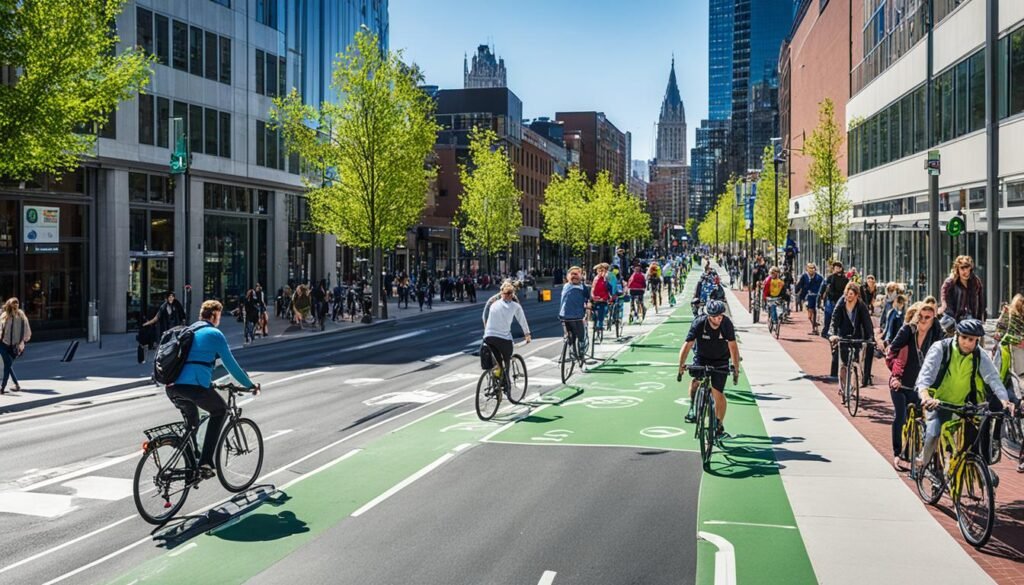
Building environmentally friendly homes is not just about individual houses; it’s about creating sustainable communities. Placemaking plays a crucial role in achieving this goal by prioritizing people over cars and promoting eco-friendly practices. By reducing car dominance, encouraging walkability and cycling infrastructure, and providing access to renewable energy sources, we can create communities that prioritize sustainability and reduce our environmental impact.
Promoting Walkability and Reducing Car Dominance
Walkability is an essential aspect of sustainable communities. By designing neighborhoods with pedestrian-friendly streets, sidewalks, and green spaces, we can encourage residents to walk and reduce their dependence on cars. This not only reduces carbon emissions but also improves the overall health and well-being of the community. Additionally, implementing bike lanes and bike-sharing programs promotes cycling as a viable mode of transportation, further reducing car dominance.
Access to Renewable Energy Sources
Access to renewable energy plays a significant role in creating sustainable communities. By integrating solar panels and other renewable energy sources into community buildings and homes, residents can reduce their reliance on fossil fuels and contribute to a cleaner energy future. This not only benefits the environment but also leads to cost savings for residents in the long run.
Reduced Energy Consumption through Enhanced Insulation and Smart Energy Measurement
Designing homes with enhanced insulation and implementing smart energy measurement systems contributes to reduced energy consumption in communities. Proper insulation helps to maintain comfortable temperatures inside homes without depending heavily on heating or cooling systems. Smart energy measurement systems allow residents to monitor and optimize their energy usage, leading to more efficient and sustainable energy consumption practices.
| Benefits of Creating Sustainable Communities |
|---|
| Reduced carbon emissions |
| Healthier and more active residents |
| Cost savings on energy bills |
| Enhanced community well-being |
By prioritizing placemaking, reducing car dominance, providing access to renewable energy sources, and implementing energy-efficient measures, we can create sustainable communities that contribute to a greener and more environmentally friendly future.
Environmental Benefits of Green Homes
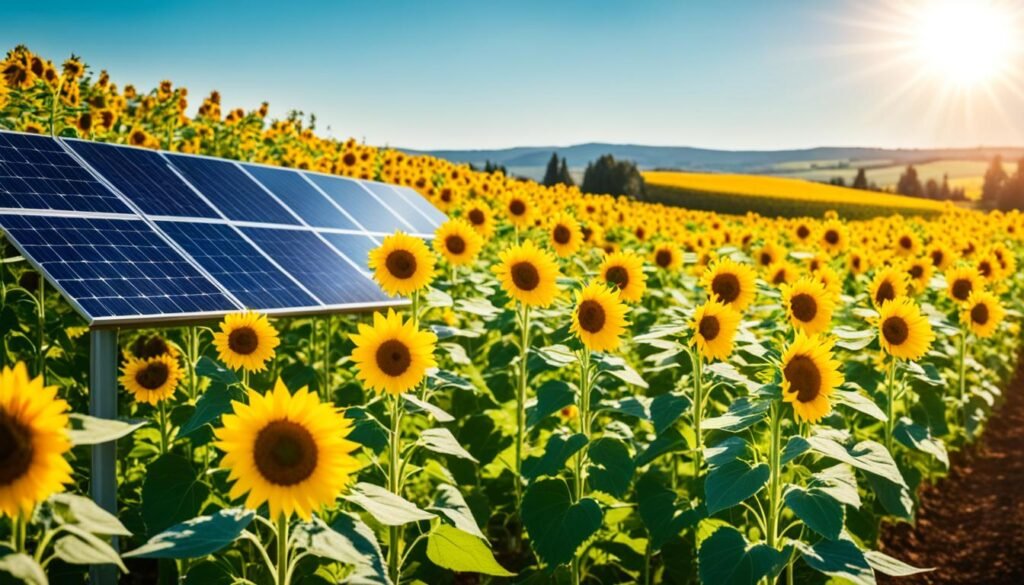
Building environmentally friendly homes plays a crucial role in reducing carbon footprint and greenhouse gas emissions. By incorporating sustainable practices and utilizing renewable energy sources, homeowners can contribute to a greener future and a more sustainable environment. Let’s explore some of the key environmental benefits of green homes:
1. Reduced Carbon Footprint
Green homes prioritize energy efficiency, which directly translates into reduced carbon dioxide emissions. By using energy-efficient designs and appliances, homeowners can significantly minimize their impact on the environment. Additionally, incorporating renewable energy sources such as solar panels further reduces the reliance on fossil fuels and promotes a cleaner, more sustainable energy mix.
2. Lower Greenhouse Gas Emissions
Green homes contribute to the reduction of greenhouse gas emissions, including carbon dioxide, methane, and nitrous oxide. By adopting energy-saving measures and utilizing renewable energy, homeowners can minimize their contribution to global warming and climate change. The reduced dependence on carbon-intensive energy sources results in a significant decrease in greenhouse gas emissions, helping to mitigate the adverse effects of climate change.
3. Energy Savings
One of the key advantages of green homes is their focus on energy efficiency. By using energy-saving technologies and appliances, homeowners can experience substantial energy savings. This not only reduces their utility bills but also conserves valuable energy resources. Green homes typically employ insulation, high-performance windows, and energy-efficient lighting systems, all of which contribute to lower energy consumption and cost savings.
| Environmental Benefit | Description |
|---|---|
| Reduced Carbon Footprint | Building environmentally friendly homes helps to minimize the carbon dioxide emissions associated with energy consumption. |
| Lower Greenhouse Gas Emissions | Green homes significantly reduce the release of greenhouse gases like carbon dioxide, methane, and nitrous oxide, contributing to a healthier environment. |
| Energy Savings | Implementing energy-efficient designs and appliances in green homes leads to reduced energy consumption and cost savings for homeowners. |
Sustainable homes not only benefit the homeowners but also the entire ecosystem. By building green, we take a step towards a future where energy efficiency and environmental consciousness are valued.
In recognition of these significant environmental benefits, homeowners and builders are increasingly embracing sustainable housing options. The utilization of renewable energy sources, coupled with energy-efficient designs and appliances, contributes to a more sustainable lifestyle and creates a greener future for generations to come. With each green home built, we move closer to achieving a more sustainable and resilient planet.
The Future of Sustainable Construction
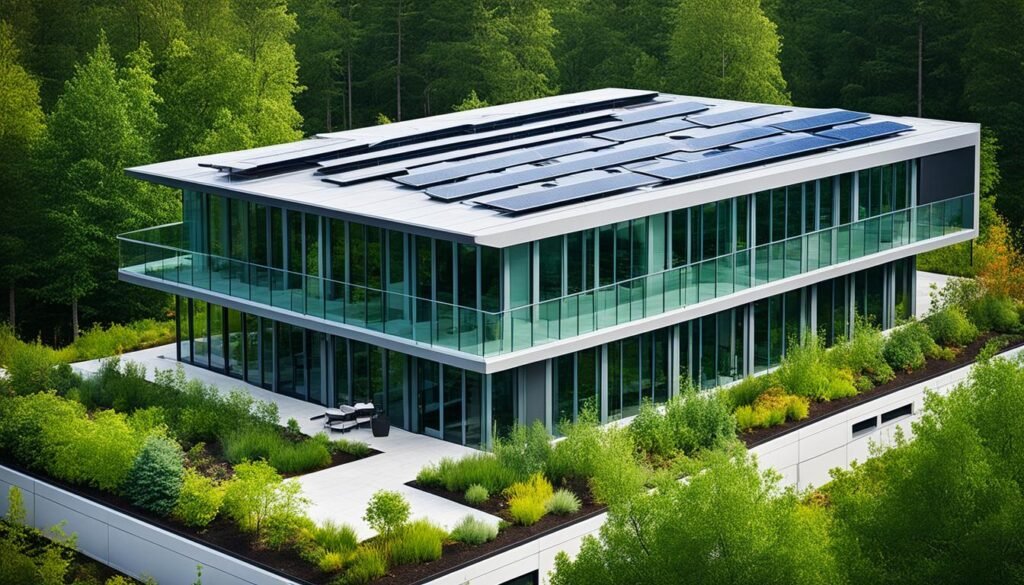
The construction industry is continually evolving to prioritize sustainability and embrace innovation. With a focus on sustainable living, energy-efficient buildings, and construction innovation, the future of construction holds promise for a greener, more eco-friendly approach to building homes.
As technology advances, new methods and practices are emerging that contribute to the development of sustainable and energy-efficient buildings. These advancements not only benefit the environment but also provide tangible benefits to homeowners and communities.
Designing and constructing energy-efficient buildings is a key aspect of sustainable living. By implementing smart designs, utilizing renewable energy sources, and incorporating energy-saving technologies, buildings can significantly reduce their environmental impact.
One of the key areas of innovation in sustainable construction is the use of environmentally friendly materials. Builders are increasingly turning to sustainable alternatives such as recycled steel, reclaimed wood, and bamboo. These materials offer strength, versatility, and reduced environmental impact, making them ideal choices for constructing energy-efficient buildings.
Furthermore, the adoption of smart home technologies is revolutionizing the way buildings operate and consume energy. Energy-efficient lighting systems, automated temperature control, and smart home automation enable homeowners to reduce their energy consumption and create more sustainable living spaces.
“Sustainable construction is not just a trend; it’s the future of building homes. By embracing energy-efficient practices and utilizing environmentally friendly materials, we can create a greener and more sustainable environment for future generations.”
In conclusion, the future of sustainable construction lies in the continued focus on sustainable living, energy-efficient buildings, and construction innovation. By integrating smart technologies, using eco-friendly materials, and adopting energy-saving practices, the construction industry is paving the way for a more sustainable and environmentally conscious future.
Image:
The Role of Exeter City in Sustainable Housing
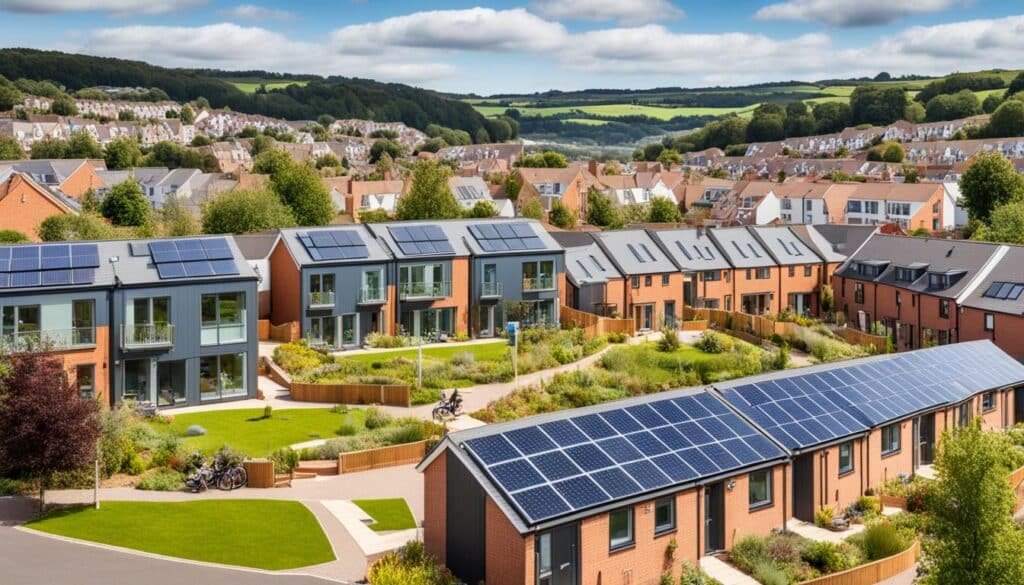
Exeter City, like many other cities, has set ambitious goals for sustainable development, including zero-carbon housing. Collaboration between organizations like Exeter City Futures and developers like Verto Homes is crucial in achieving these goals. The focus on sustainability, affordability, and innovation in housing design and construction contributes to a greener and more sustainable future for Exeter.
Exeter City Futures, a non-profit organization dedicated to sustainable development, plays a key role in driving the city’s transition to a low-carbon economy. Through partnerships with local businesses, government agencies, and community organizations, Exeter City Futures promotes sustainable practices and fosters innovation in various sectors, including housing.
The Commitment to Zero-Carbon Housing
One of the primary aims of Exeter City is to achieve zero-carbon housing. This means developing homes that produce no net carbon emissions during their operation. To accomplish this, Exeter City is working closely with developers like Verto Homes, known for their expertise in sustainable construction.
Verto Homes specializes in building energy-efficient, eco-friendly properties that utilize renewable energy sources and cutting-edge technologies. Their projects prioritize sustainability without compromising on quality or comfort. By collaborating with organizations like Exeter City Futures, Verto Homes can access resources and support to further enhance the sustainability of their housing developments.
The partnership between Exeter City Futures and Verto Homes aims to create sustainable communities that prioritize environmental stewardship and promote a high quality of life. By incorporating green building practices, energy-efficient designs, and renewable energy technologies, these developments pave the way for a more sustainable future.
Sustainable Features of Exeter City’s Housing Developments
| Development | Sustainable Features |
|---|---|
| Greenfields Estates |
|
| Riverside View |
|
| Parkside Heights |
|
These sustainable features are just a few examples of how Exeter City is leading the way in zero-carbon housing and sustainable development. By prioritizing environmental responsibility and fostering collaboration between public and private sectors, Exeter City is building a greener and more resilient community.
Conclusion
Building an environmentally friendly home goes beyond using sustainable materials and energy-efficient designs. It is about embracing a sustainable and energy-efficient lifestyle. By incorporating green building practices, utilizing renewable energy sources, and implementing smart technologies, homeowners can make a significant impact on the environment and create a greener future.
Constructing sustainable homes brings numerous benefits. Not only does it reduce the carbon footprint and contribute to a more sustainable environment, but it also improves indoor air quality for occupants. Additionally, sustainable homes help homeowners save money in the long run through reduced energy consumption and lower utility bills.
In order to achieve a truly environmentally friendly home, it is important to consider green home construction ideas and prioritize energy efficiency. From choosing sustainable materials and utilizing renewable energy sources to adopting smart home technologies, every decision made during the construction process can make a difference. By making these conscious choices, individuals can play their part in building a more sustainable and eco-friendly future.
Also Refer : Home Sweet Smart Home: Exploring Technology In Modern Construction
FAQs
Q: What is an eco-friendly home?
A: An eco-friendly home is a house designed and built using sustainable materials and practices to minimize its impact on the environment and maximize energy efficiency.
Q: How can I insulate my home to make it more energy efficient?
A: You can insulate your home by using materials like fiberglass, spray foam, or cellulose insulation to reduce heat loss and energy use.
Q: What are some eco-friendly building materials I can use for my home construction?
A: You can use materials such as recycled steel, bamboo, reclaimed wood, and low VOC paints to construct an eco-friendly home.
Q: What are some ways to incorporate solar energy into my home design?
A: You can install solar panels on your roof to harness solar energy for electricity production, or use solar water heaters to reduce energy costs.
Q: How can I make my home heating and cooling system more energy efficient?
A: You can install a smart thermostat, use energy-efficient heating and cooling units, and ensure your home is well-insulated to reduce energy use.
Q: What are some water-saving features I can incorporate into my home?
A: You can install low-flow faucets, use water-saving toilets, and implement rainwater harvesting or greywater recycling systems to reduce water use in your home less energy natural light reusable.
Q: What are some benefits of composting in relation to an eco-friendly home?
A: Composting reduces the amount of organic waste sent to landfills, enriches soil, and helps in creating a sustainable and eco-friendly environment volatile organic compounds for your home.
Source Links
- https://blogs.worldbank.org/psd/building-sustainable-future-affordable-green-housing-emerging-markets
- https://www.linkedin.com/pulse/beyond-bricks-mortar-building-zero-carbon-communities-james-geer
- https://medium.com/@TWagner63639/building-tomorrow-the-art-of-construction-beyond-bricks-and-mortar-babca8f11c8e
